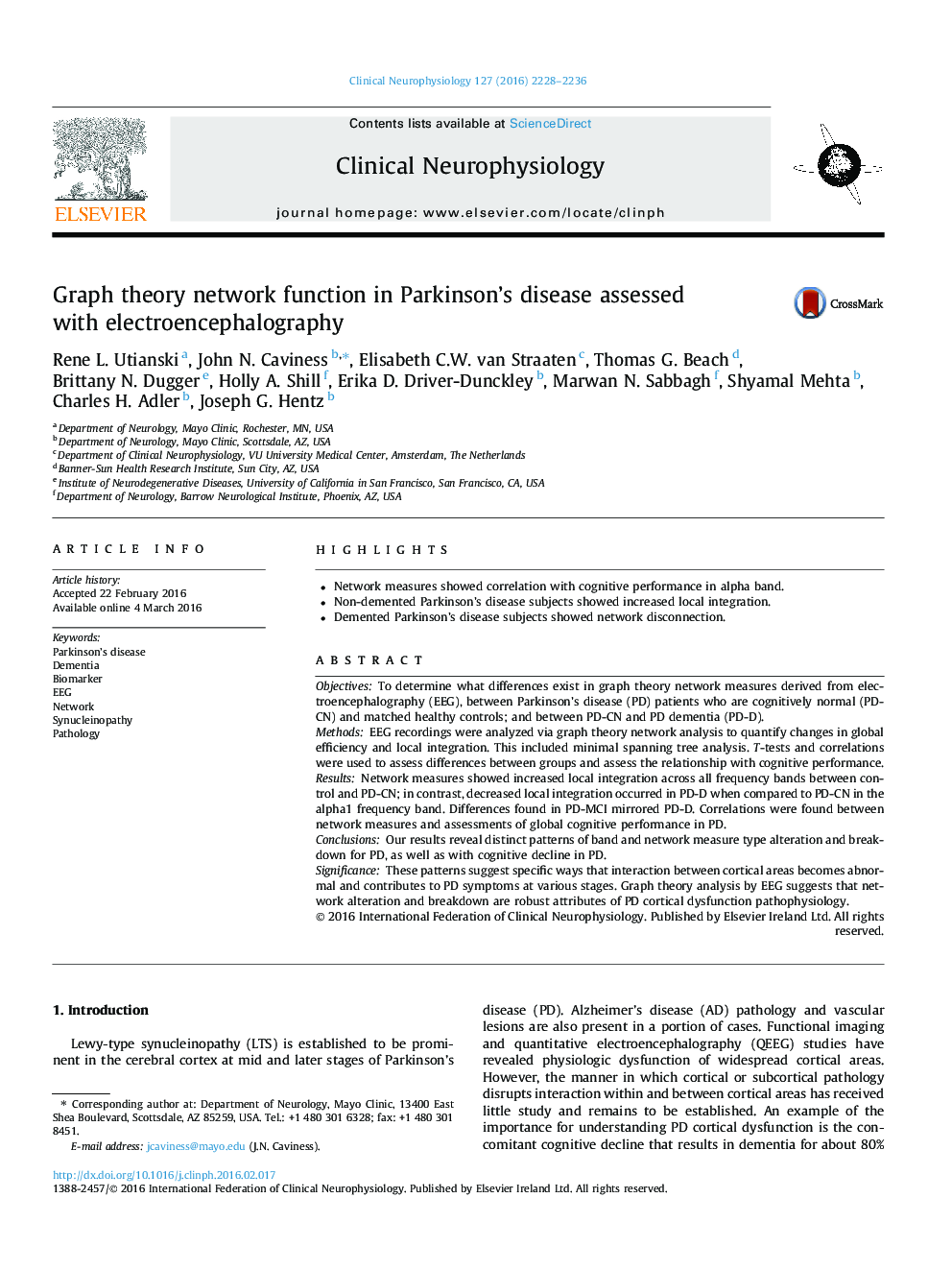| Article ID | Journal | Published Year | Pages | File Type |
|---|---|---|---|---|
| 6007451 | Clinical Neurophysiology | 2016 | 9 Pages |
â¢Network measures showed correlation with cognitive performance in alpha band.â¢Non-demented Parkinson's disease subjects showed increased local integration.â¢Demented Parkinson's disease subjects showed network disconnection.
ObjectivesTo determine what differences exist in graph theory network measures derived from electroencephalography (EEG), between Parkinson's disease (PD) patients who are cognitively normal (PD-CN) and matched healthy controls; and between PD-CN and PD dementia (PD-D).MethodsEEG recordings were analyzed via graph theory network analysis to quantify changes in global efficiency and local integration. This included minimal spanning tree analysis. T-tests and correlations were used to assess differences between groups and assess the relationship with cognitive performance.ResultsNetwork measures showed increased local integration across all frequency bands between control and PD-CN; in contrast, decreased local integration occurred in PD-D when compared to PD-CN in the alpha1 frequency band. Differences found in PD-MCI mirrored PD-D. Correlations were found between network measures and assessments of global cognitive performance in PD.ConclusionsOur results reveal distinct patterns of band and network measure type alteration and breakdown for PD, as well as with cognitive decline in PD.SignificanceThese patterns suggest specific ways that interaction between cortical areas becomes abnormal and contributes to PD symptoms at various stages. Graph theory analysis by EEG suggests that network alteration and breakdown are robust attributes of PD cortical dysfunction pathophysiology.
